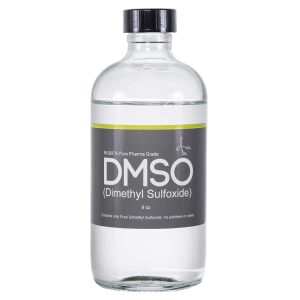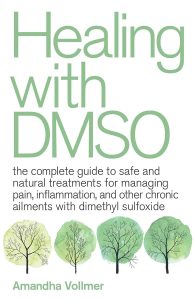
In the world of cancer research, Dimethyl Sulfoxide (DMSO) stands as a clear, colorless, and largely odorless liquid with remarkable anti-tumor qualities. This article delves into DMSO’s potential as a powerful tool against cancer, supported by over 6,000 scientific articles. While veterinarians use it freely for animal cancer treatment, DMSO’s potential benefits in human cancer therapy cannot be ignored.
The Origin of DMSO: A By-Product of Nature
DMSO originates from lignin, the natural material that binds the cells of trees together. Interestingly, it is a by-product of the paper manufacturing process, extracted during pulp production, and first synthesized in 1866. Its medicinal journey began in the 1960s.
After gaining FDA approval for experimental use, DMSO found initial application in topical form to alleviate pain, reduce swelling, facilitate healing in muscle strains, sprains, and arthritis treatment. A surprising discovery revealed its role as a catalyst for conventional chemotherapy, potentially lowering the required chemotherapeutic agent dosage.
DMSO in Cancer Treatment: A Catalyst for Progress
DMSO has been embraced by several clinics in cancer treatment, targeting malignancies of the bladder, ovaries, breasts, and skin. Administered to humans, DMSO rapidly absorbs, leaving a garlic-like taste and odor on breath and skin for up to three days. It can be ingested, injected, or delivered via an enema, with treatment cycles typically spanning around four weeks.
DMSO’s potential in cancer therapy lies in its ability to stimulate various aspects of the immune system while scavenging hydroxyl radicals, the most potent of free radicals. These free radicals actively promote tumor growth, making DMSO a possible interference mechanism in cancer development. It may also explain why cancer patients undergoing chemotherapy or radiation treatments, which generate free radicals to combat cancer cells, experience reduced side effects such as hair loss, nausea, and dry mouth when supplemented with DMSO.
DMSO vs. Drug-Resistant Bacteria
Recent studies suggest that DMSO may combat an intriguing angle of cancer development – drug-resistant bacteria, including dwarf bacteria that may play a role in certain cancers. Experimental evidence supports this theory, alongside observations from alternative physicians who have recognized this “pleomorphism.”
Even at low concentrations, DMSO exhibits the potential to eliminate these bacteria, a remarkable feat given their notorious resistance to conventional drugs. In a 12.5% solution, DMSO demonstrates long-term inhibitory effects on cancer tumors in laboratory settings.
A Remarkable Cancer Cure: The Clyde Robert Lindsey Case
A notable case in 1970 spotlighted the potential of DMSO in cancer treatment. Three-year-old Clyde Robert Lindsey of Pasadena, Texas, suffered from a severe cancer known as Letterer-Siwe disease. Conventional doctors deemed the case hopeless as the cancer had spread throughout his body. However, Dr. Eli Tucker of Houston administered a dilute mixture of DMSO and haematoxylon, a chemical used as a dye to locate pathological animal cells. This unique combination exhibited a particular affinity for tumor cells. As a result, the haematoxylon-DMSO treatment led to the inactivation of substances surrounding the cancer cells, ultimately starving them. Clyde’s cancer was eliminated, marking a remarkable success story.
Understanding DMSO Side Effects
While DMSO demonstrates tremendous potential in cancer treatment, it’s important to be aware of potential side effects. These include a garlicky taste in the mouth, a slightly pungent breath, headaches, dizziness, mild nausea, localized skin rashes, or a tingling sensation on the skin. A potent solvent, DMSO penetrates deeply, and the nutritional sulfur within it, Methylsulfonylmethane (MSM), is a key component allowing such penetration. MSM, discovered in 1963 by Dr. Stanley Jacobs, plays a role in slowing the development of mammary and colon tumors, offering potential relief from pain and inflammation.
Exploring MSM’s Role in Cancer Management
MSM has also shown remarkable potential in laboratory tests, as a cure for snoring and lupus, arthritis relief, and life extension for cancer patients. Furthermore, it has been shown to “melt away” scar tissue in burn victims, rejuvenate skin, strengthen hair and nails, alleviate allergies, and heal bee stings. Athletes have turned to MSM to ease muscle soreness. In addition to these benefits, MSM plays a crucial role in rebuilding connective tissue and collagen, making it a valuable asset in cancer therapy.
Proper Dosing of DMSO and MSM
The recommended dose for DMSO is 1/2 to 1 teaspoon per 100 pounds of body weight, every 12 hours. The substance dissipates from the body within 12 hours, with approximately 30% excreted through the skin.
Unlocking the potential of DMSO and MSM in cancer treatment offers an intriguing avenue for researchers and clinicians alike, highlighting the promise of a unique and multifaceted approach to cancer therapy. As with any medical treatment, it’s essential to consult with a healthcare professional to explore these options and ensure the safety and suitability of such treatments.







